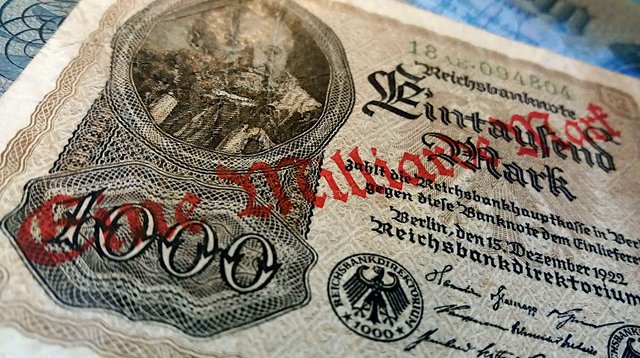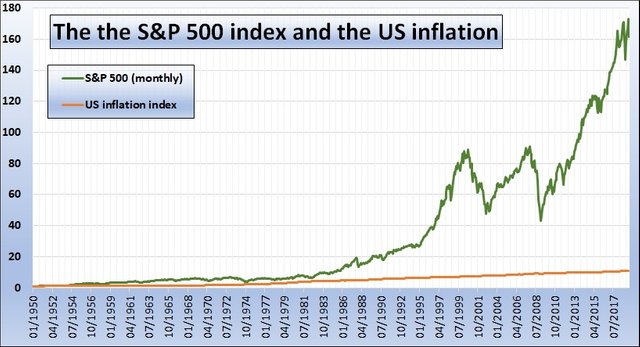Stocks And High Gains: Is That Only An Investing Myth To Bust? (2)

Don’t believe anybody, so I make my own calculations if I can. The financial world teaches you: stocks have a high yield, higher than bonds or inflation. Is it possible that they are only fooling you and they always choose a favorable time frame? In reality, are very bad stock market yields also very common, or not?
1000 percent of inflation
In the last post, I calculated moving 10 and 20 year backward yields, and it was very difficult to find negative yielding periods. There are some, like the 10 years before the 2008-2009 crash, but the great part of the yields is positive. OK, now let’s see the inflation.
In the USA, from January of 1950, the inflation index surged from 23.5 to 255.5. (Source.) This means that prices have risen to the levels about 11-times higher. (Surged almost 1000 percent.)
Sensational stock yields?
In the meantime, the S&P 500 USA large-cap shares index jumped to a 173-fold level until the end of April 2019. (To 2945, from 17 in 1950, by Yahoo Finance.) Or, 17 200 percent. That seems to be sensational, but in reality, this is “only” 7.77 percent per annum in 69.33 years. (173^(1*69.33)-1.) The average inflation was 3.5 percent p. a.

(Click the chart for higher resolution.)
So, stocks brought more than double than the value of inflation. Surprising? Not really. That are results of the famous laws of the compound interest.
Dividends as a bonus
Very well. But the commonly used S&P 500 index has a little failure, as I mentioned last time: It doesn’t contain the dividends paid out by companies. There is another index, the S&P 500 Total Return, but I couldn’t find it from 1950, only from 1988. But in these more than 30 years it brought approximately two percent more per annum than the “normal” S&P 500 index.
Cryptocurrency fans are often complaining that fiat currencies – and not only traditionally weak ones like Argentinian Peso or Turkish Lira, but also US Dollar – are losing their value over time. That is true, the dollar also had lost approximately 90 percent of its value, only from January 1950, as we have seen.
Don’t let it be rotten
But, nobody is supposed to let the money rot in the drawer, it should be invested. In case it multiplies over time, is not so bad to have a lot of fiat money, right? Yes, fiat is “inflationary money” – but cryptocurrencies, are inflationary, too, see my other post.
And what about bonds? I don’t know yet. It seems to be almost impossible to find a long term bond market index, available for analysis for free. I would need some expensive subscription to a database, seemingly. (I can’t pay Reuters or Bloomberg terminal.) I’ll try to investigate further. But by other sources, in the long term, the yields of bonds should be somewhere between the inflation and the stock markets.
The first part here: Stocks And High Gains: Is That An Investing Myth To Bust?
(Photo: hyperinflation – German bank note of one billion mark from 1922. Own collection.)
Congratulations @deathcross!
Your post was mentioned in the Steem Hit Parade in the following category: